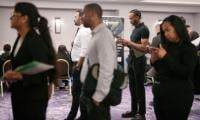Anatomy of a protest
No sane person can condone the violence and arson attacks that rocked Pakistan in reaction to former prime minister Imran Khan’s arrest on May 9, 2023. These acts of vandalism are utterly indefensible and entirely unacceptable, and those guilty of carrying them out must be brought to book. This, however, does – and should – not preclude a level-headed analysis of the factors that, directly or indirectly, might have triggered these incidents.
Some of the most important questions such an analysis must ask are why the protesters committed such wanton acts of destruction, what emboldened them to resort to vandalism, and how to prevent the occurrence of such instances in the future. The answers to these questions are certainly neither easy nor straightforward. Each analyst may use their own approach when analyzing those events. Personally, I tend to favour the psychological and sociological frames of reference. The former can help understand individual and group behaviour and decision-making in contentious politics. The latter focuses on the social aspects, such as the actors, networks, identities, and cultures involved in political contention and their implications.
Let us take the sociological approach first. It is clear that the protesters (both who resorted to violence and those who remained non-violent) came from diverse backgrounds and affiliations, making it difficult to generalize their identity. However, it is reasonable to assume that most of them were ardent followers of Imran Khan, viewing him as a charismatic leader capable of instituting positive change in the country. Their support base is primarily concentrated in urban centres of Pakistan.
Within them, a major group comprised energetic young individuals, aware of their rights and freedoms, skilled in social media and other communication tools to coordinate their actions and spread their message, and willing to challenge the status quo. They are dissatisfied with the current economic and political situation, worried about their future, and frustrated with high unemployment, inflation, and elite capture. The other group among them was composed of middle-income earners. They believe they have lost the most during the ongoing economic crisis which followed the political turmoil in which Imran Khan’s government got ousted. The persistently high inflation of above 45 per cent, ever-increasing interest rates, and the massive depreciation of the rupee over the last year or so has eaten into their salaries, earnings, and savings.
The economic crisis has also depreciated the value of the physical assets this class has mustered over the last few decades. They, therefore, perceive themselves as being the biggest ‘losers’ of the current economic morass. Many members of this group also fear losing all they have if the national economy does not take a turn for the better soon. They also believe that the elites in Pakistan have not given up their privileges and luxurious lifestyle.
The third group of protesters was those who had joined the mob just for the thrill of it. And the fourth group were miscreants and instigators, who would have some vested interest in creating chaos and pressurizing the state.
The extreme violence and vandalism on May 9 did not go with the perceptions attached to educated, urban middle-class Pakistanis who have always been thought of – perhaps, in a trope – as different from Pakistan’s traditional religious extremist groups. What made them so radical?
We can use different theories of collective behaviour to understand the socio-psychological factors behind their unprecedented behaviour.
One theory is ‘contagion theory’, which says that people in large crowds get so excited that they lose their reason and act on emotion. They also feel anonymous and less responsible for their actions. They may follow the behaviour of others around them, especially if they think they are similar or like-minded.
Another theory is the ‘convergence theory’, which disagrees with the contagion theory that crowd behaviour is irrational, emotional, and results from a leader or crowd’s influence. It says that people join protests because they already have political grievances or opinions that agree with those of the protesters. They also join protests because they want to show solidarity with others who share their views and goals.
A third theory is ‘shared psychosis’. This theory means that people get disillusioned and adopt the false beliefs of another person, usually a charismatic leader or a dominant personality. They perceive their leader’s adversaries as their enemies and can go to any extent to defend her/him.
A fourth factor that may have influenced the crowd’s behaviour is the appeal of mob justice in Pakistan. Sadly, there is a lack of trust in the formal justice system and the state institutions. In the past, we have seen tragic cases of mob lynchings. We tend to blame this behavior on religious extremism. However, similar behaviour has entered national politics. The reaction of Khan’s supporters to his arrest is a clear example of this behaviour. The daylong sit-in of the PDM led by the JUI-F in front of the Supreme Court to protest the judicial relief given to Khan was also ill-thought-out.
Looking back at the riots of May 9, it is concerning to see a significant portion of the educated urban middle class engaging (willingly or incited) in violent behaviour. Despite being aware of the potential consequences, they either ignored them, underestimated their severity, or rationalized them as a necessary sacrifice or risk.
All three scenarios are a warning for the state and society of Pakistan. They reveal the extent of the distrust and discontent that exists among different groups and institutions. Deep-seated social and economic inequalities and perception of injustice fuel anger, frustration, and resentment in a low-trust society, which in turn increases the country’s vulnerability to violence and instability.
It is important to identify the planners, abettors, and facilitators of the tragic incidents of May 9. Those responsible should be brought to task. At the same time, the state must not ignore that it has to address the underlying economic and social causes of discontent and distrust among its people. As history shows, a trust deficit in society can lead to various forms of instabilities, leaving nothing secure.
The writer heads the Sustainable Development Policy Institute. He tweets @abidsuleri
-
 Prince Harry Priorities Shift As He Grows Tired Of Being In Meghan Markle’s Shadow
Prince Harry Priorities Shift As He Grows Tired Of Being In Meghan Markle’s Shadow -
 Kensington Palace Shares Major Update After Kate Middleton's Secret Birthday Celebrations Were Revealed
Kensington Palace Shares Major Update After Kate Middleton's Secret Birthday Celebrations Were Revealed -
 Nvidia H200 Faceoff: China To Block AI Chip Imports After Trump’s Approval
Nvidia H200 Faceoff: China To Block AI Chip Imports After Trump’s Approval -
 Royal Family Warned About 'fighter' Sarah Ferguson Next Move
Royal Family Warned About 'fighter' Sarah Ferguson Next Move -
 UK Considers Social Media Ban For Under-16s
UK Considers Social Media Ban For Under-16s -
 Amanda Holden Speaks About 'very Dark Time' From Personal Life
Amanda Holden Speaks About 'very Dark Time' From Personal Life -
 Brooklyn Beckham Sides With Nicola Peltz As Tensions With David, Victoria Flare
Brooklyn Beckham Sides With Nicola Peltz As Tensions With David, Victoria Flare -
 Andrew, Sarah Ferguson Prepare To Go Separate Ways Earlier Than Planned
Andrew, Sarah Ferguson Prepare To Go Separate Ways Earlier Than Planned -
 Toby Kiers Wins ‘Environmental Nobel' For Pioneering Research Into Hidden Fungal Networks
Toby Kiers Wins ‘Environmental Nobel' For Pioneering Research Into Hidden Fungal Networks -
 Oprah Winfrey Reveals How Her Weight-loss Medication Works
Oprah Winfrey Reveals How Her Weight-loss Medication Works -
 2025 Was Third-hottest Year On Record; Will Climate Crises Worsen In 2026?
2025 Was Third-hottest Year On Record; Will Climate Crises Worsen In 2026? -
 2026 Jobs Outlook: Global Unemployment Hits 4.9%, Decent Work Deficit Widens
2026 Jobs Outlook: Global Unemployment Hits 4.9%, Decent Work Deficit Widens -
 NHS Issues 'eight-week' Warning For Omeprazole Users
NHS Issues 'eight-week' Warning For Omeprazole Users -
 Details Of Kate Middleton 44th Birthday Celebrations With Family Revealed
Details Of Kate Middleton 44th Birthday Celebrations With Family Revealed -
 Elon Musk Introduces Subscription Model For Tesla FSD In Strategic Move
Elon Musk Introduces Subscription Model For Tesla FSD In Strategic Move -
 Prince Harry To 'soft Launch' Meghan Markle As They Test Return To Royal Life
Prince Harry To 'soft Launch' Meghan Markle As They Test Return To Royal Life



